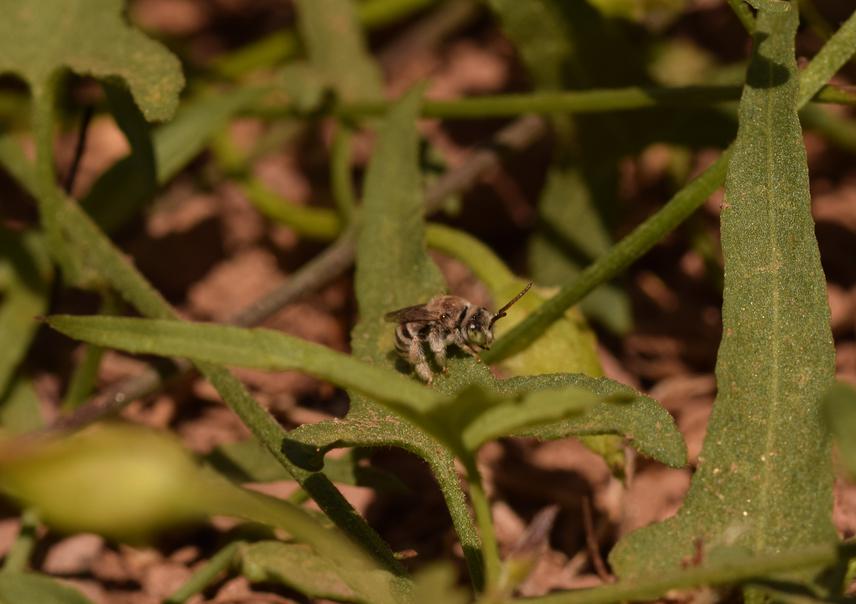Diego de Pedro
Within pollinators, bees are considered the most efficient group. The Sonoran Desert, which covers the southwestern United States and northwestern Mexican states of Baja California and Sonora, is the most diverse ecoregion worldwide with regard to bees. Nevertheless, there is a paucity of studies on their species richness and abundance on the Mexican side. The project will take place in the central desert, located between San Pedro Mártir mountain range and San Francisco mountains of Baja California. This desert is characterized by its high levels of plant endemism, such as the Boojum tree (Fouquieria columnaris), the copalquin (Pachycormus discolor), and the Mexican giant cardon (Pachycereus pringlei).

Anthophorula sp. male perched on a leaf. © Luz Abril Garduño Villaseñor
This study will contribute to the knowledge of biodiversity in different dimensions. Through the contribution of new records and the conjunction of different databases it will allow the elaboration of a complete taxonomic list of the species of bees present in Baja California, with distribution ranges, abundance, and the description of their phenology and host plants. Furthermore, it will provide information on the phylogenetic relationship of the present bees, which will favour the understanding of their evolutionary histories and their relationship with native flora.
These objectives will work as theoretical basis to infer the complexity of pollination networks in Baja California deserts. The above, as a whole, will serve to understand which the ecosystem processes are most vulnerable to anthropogenic activities and, therefore to decision-making on the conservation of biodiversity and environmental services.